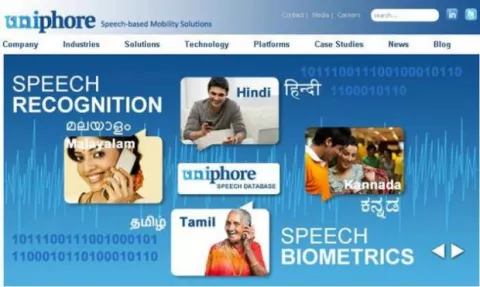
A Chennai-based start-up — Uniphore Software Systems — co-founded by Umesh Sachdev, the only Indian on Time magazine’s 2016 list of ‘10 Next-Generation Leaders’ is addressing the language barrier faced by India’s rural denizens, who still use fingerprints for banking transactions.
Uniphore has developed software that allows people to use their phones and speak in their local languages to access services such as online banking. The company has expanded its reach not only in India, but throughout the entire South Asian region, where a similar language barrier problem exists.
Uniphore’s software is built around speech recognition. The technology is applied to rural sectors where people have to use established platforms for transactions, for instance, while opening bank accounts. As explained, due to inadequate infrastructure, people are still using fingerprints for such transactions.
Interestingly, the products developed by the start-up support more than 16 Indian languages and more than 150 dialects. They also work in around 70 global languages. Despite the software’s versatility, one of the biggest challenges is to make people believe that such a product can exist and that it works.
Now, with the help of this software, people in rural areas can connect to the infrastructure that is missing in villages, in sectors like healthcare and banking. Meanwhile, the company has three key product services that use speech for transactions, analytics, authentication and consumer-care redressal.
Today banks are dealing with data breaches and system hacks on a regular basis. PINs and ATM cards are still not 100 per cent secure. To address this issue, the software cuts transaction time and eliminates frauds. Uniphore has integrated its voice biometrics solutions to authenticate customers within 15 seconds.
The company’s voice biometrics software collects voiceprints, and is built using 32 different elements of the user's voice pattern, including physical and behavioural characteristics of individual voices, and verifies it every time. A voice pattern can't be faked or imitated, as it is unique to every individual, like a fingerprint.



